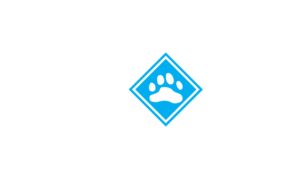In some form or another, we all share a certain yearning to disconnect from our fast paced lives. We seek that release, that escape to solitude and a clear mind. For some, that yearning draws us to venture outdoors for our own little piece of the wild. Here in Vermont, winter enthusiasts can head for the 300-mile long Catamount Trail, which connects towns and Nordic centers via a single, snaking trail that meanders through a mosaic of fields and forest.
While half of the trail is permanently protected on public lands, the Catamount Trail Association’s (CTA) Trail Protection Program strives to maintain access to the remaining 165 miles that cross privately owned farm and forestland. Much of the northern half of the Catamount Trail traverses private property, which means access is largely dependent on maintaining positive relationships with landowners who graciously allow the trail to cross their land. Due to ever-increasing pressures from development, evolving land ownership patterns, subdivisions and fragmentation, and minimal infrastructure to protect the integrity of intact forestlands, the future connectivity of the Catamount Trail is held in an uncertain balance.
 Throughout Vermont’s history, the region’s natural forested landscape has played a central role in defining the structure of our rural communities, economy, and recreational and tourism opportunities. While Vermont remains one of the most forested states with over 75% cover, we are now seeing this percentage decline for the first time since land clearing practices in the mid 1800’s. Because this is expected to continue as a long-term trend, Vermont’s forestland is vulnerable to fragmentation and subdivision of private lands as well as a broad land-use conversion away from rural agriculture and forestry practices.
Throughout Vermont’s history, the region’s natural forested landscape has played a central role in defining the structure of our rural communities, economy, and recreational and tourism opportunities. While Vermont remains one of the most forested states with over 75% cover, we are now seeing this percentage decline for the first time since land clearing practices in the mid 1800’s. Because this is expected to continue as a long-term trend, Vermont’s forestland is vulnerable to fragmentation and subdivision of private lands as well as a broad land-use conversion away from rural agriculture and forestry practices.
There are a number of drivers contributing to the overall shift in settlement and land ownership patterns within the state but many can be directly traced to the rising costs associated with owning large tracts of land. High land prices and property taxes pressure landowners to sell off land in subdivided parcels, many of which are purchased for residential development in rural settings.
 Direct consequences of continued property subdivision and land development within the state include more private property postings, restrictions on public access for recreational opportunities like the Catamount Trail, the increased likelihood of land-use conflicts, and the degradation of forest habitat quality and ecosystem resiliency. Left unchecked, this will lead to negative impacts on tourism and outdoor recreation-an industry that is estimated to contribute nearly $1.9 million annually to the Vermont economy (The Economic Importance of Vermont’s Forest-Based Economy, 2013). For the Catamount Trail Association and other organizations that rely on maintaining positive landowner relationships to provide access throughout the state, the need for a process to better protect our rural and forested landscape is of critical importance.
Direct consequences of continued property subdivision and land development within the state include more private property postings, restrictions on public access for recreational opportunities like the Catamount Trail, the increased likelihood of land-use conflicts, and the degradation of forest habitat quality and ecosystem resiliency. Left unchecked, this will lead to negative impacts on tourism and outdoor recreation-an industry that is estimated to contribute nearly $1.9 million annually to the Vermont economy (The Economic Importance of Vermont’s Forest-Based Economy, 2013). For the Catamount Trail Association and other organizations that rely on maintaining positive landowner relationships to provide access throughout the state, the need for a process to better protect our rural and forested landscape is of critical importance.
The 2015 Vermont Forest Fragmentation Report issued by Vermont Department of Forests, Parks & Recreation Commissioner Michael Snyder provides an in depth review of the issues relating to anticipated population increases within the state and the probable changes in land ownership and development patterns. Proposed strategies to best protect our forestlands into the future include: increasing efforts to educate forest landowners and stakeholders, making land conservation an economically viable option, offering landowner incentives, improving land-use planning tools, and promoting the importance of Vermont’s forest economy.
 So what does this mean for the Catamount Trail, and other recreational opportunities that rely on lasting access to large tracts of forestland? While still in the planning and discussion stages, the state’s process is a hopeful step in ensuring that active, healthy lifestyles, and enjoyment of our natural resources remain part of Vermont’s legacy.
So what does this mean for the Catamount Trail, and other recreational opportunities that rely on lasting access to large tracts of forestland? While still in the planning and discussion stages, the state’s process is a hopeful step in ensuring that active, healthy lifestyles, and enjoyment of our natural resources remain part of Vermont’s legacy.
Since 1998, The CTA has taken a proactive role, striving to protect the Catamount Trail through its Trail Protection Program. Whether directly with landowners or through partnerships with other conservation organizations, the CTA is working towards a goal of permanent protection of the trail through the acquisition of permanent access easements. Like so many things that are uniquely Vermont, the Catamount Trail is part of the narrative that defines our state. It is only through permanent protection that we can be sure it will be enjoyed well into the future.
To learn more, you can find the 2015 Vermont Forest Fragmentation Report on the Vermont State website, and visit the CTA’s Trail Protection program page at www.catamounttrail.org/trail-protection-program.









